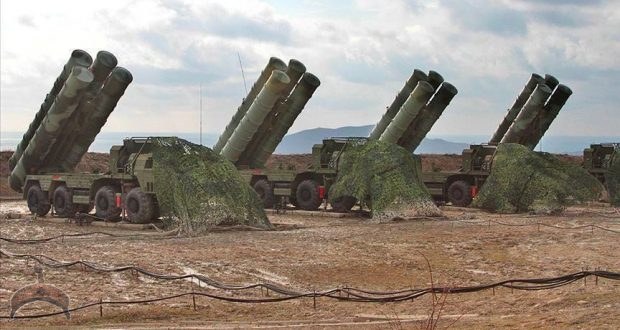The Armenian-Azerbaijani war in the Nagorno-Karabakh region does not show signs of nearing its end despite the humanitarian ceasefire launched in the region. The ceasefire started in the Nagorno-Karabakh region at 12:00 local time on October 10. The ceasefire deal was reached by the Azerbaijani and Armenian sides following long talks in Moscow a day ago. Russia played a key role in forcing the sides to make steps towards the de-escalation.
Azerbaijan and Armenia also formally agreed to begin substantive negotiations of a peaceful settlement of a military conflict over the disputed region of Nagorno-Karabakh that erupted on September 27. These talks will be mediated by the Organization for Security and co-operation in Europe’s Minsk Group of international negotiators. Following the ceasefire agreement, Azerbaijani President Ilham Aliyev said that the first phase of the military operation in the Nagorno-Karabakh region is completed. The Russian diplomatic intervention allowed to put an end to the hottest phase of the military confrontation and force the sides to halt active offensive operations on the ground.
Despite this, the situation on the ground remained very tense. Almost immediately after the start of the ceasefire regime, the sides simultaneously accused each other of violating the ceasefire and of shelling civilian and military targets, and repeated these claims on October 11 and October 12.
Meanwhile, Armenia and Azerbaijan released a new batch of fresh and few days old footage showcasing casualties of each other and making loud statements. In particular, pro-Azerbaijani sources claimed that at least two more S-300 systems of Armenia were destroyed in Karabakh. The released videos accompanying these claims include the moments of the alleged destruction of 35D6 (ST-68U) radars and a S-300 missile launcher of the Armenian military with Israeli IAI Harop loitering munitions near the village of Khojaly in the Khojaly District and the village of Qubadlı in the Kashatagh District.
The 35D6 is a vehicle-carried three-dimensional air surveillance radar system. The range of the radar’s primary functions includes the detection of low-flying targets protected with active and or passive jamming screens, and also the performance of air traffic control. It can be operated as a separate installation as well as a part of the S-300 air-defense system. Nonetheless, if it was the S-300 batteries, as Azerbaijani sources insist, it still remains unclear what these long-range air defense systems were doing so close to the frontline.
Meanwhile, the Armenian military reported that its forces repelled large Azerbaijani attacks in the northeastern and southern parts of the region. The hottest area of the frontline is the town of Hardut. Azerbaijani President Aliyev officially announced that his forces captured it a few days ago. Nonetheless, videos from the ground show that in fact most of the town remained in the hands of the Armenians. Another part of it is now a gray zone, which is not controlled by any side. According to Armenian sources, Azerbaijani troops, supported by Turkish special forces and Syrian militants, tried to capture the town just a few hours before the start of the ceasefire. After this failed attack, Azerbaijani combat drones and artillery units delivered powerful strikes on Hardut and nearby villages, but were not able to force Armenian troops to retreat.
The Armenian Defense Ministry insists that the Turkish Air Force is leading the aerial operations of Azerbaijan. “Turkish aerial command centers, flying within the Turkish airspace, are commanding the Turkish UAV’s operating in the Azerbaijani air force. UAVs, accompanied by six F-16 units, are directly attacking the peaceful population and civilian infrastructure of Artsakh,” the defense ministry spokesman said.
In its own turn, the Azerbaijani side says that it’s just taking the necessary steps to respond to Armenian violations of the ceasefire and strikes on Azerbaijani settlements. The most widely covered incident of this kind took place on October 11, when an alleged Armenian ballistic missile hit Ganja city.
The active offensive phase of the Armenian-Azerbaijani war was put on pause, but the conflict itself does not seem to be nearing its end. Without the real political will of the Azerbaijani and Armenian leadership to reach a ceasefire, the de-escalation of the conflict, without direct intervention of some third party, remains unlikely. Instead, the war has chances to resume with new power in the coming days.
 Ọmọ Oòduà Naija Gist | News From Nigeria | Entertainment gist Nigeria|Networking|News.. Visit for Nigeria breaking news , Nigerian Movies , Naija music , Jobs In Nigeria , Naija News , Nollywood, Gist and more
Ọmọ Oòduà Naija Gist | News From Nigeria | Entertainment gist Nigeria|Networking|News.. Visit for Nigeria breaking news , Nigerian Movies , Naija music , Jobs In Nigeria , Naija News , Nollywood, Gist and more








